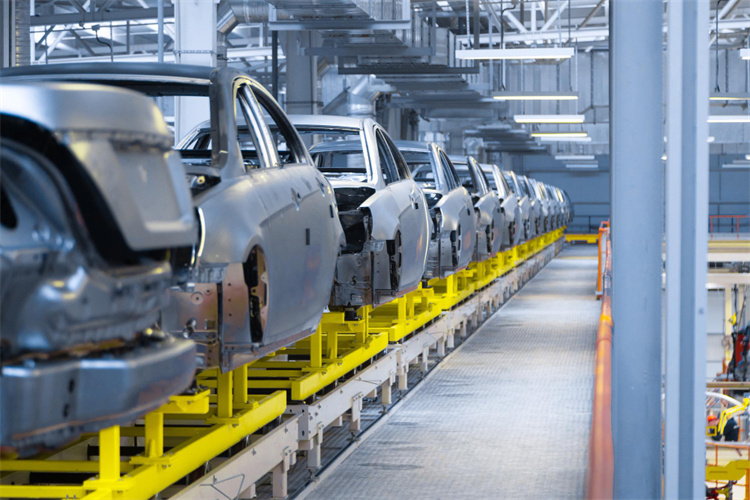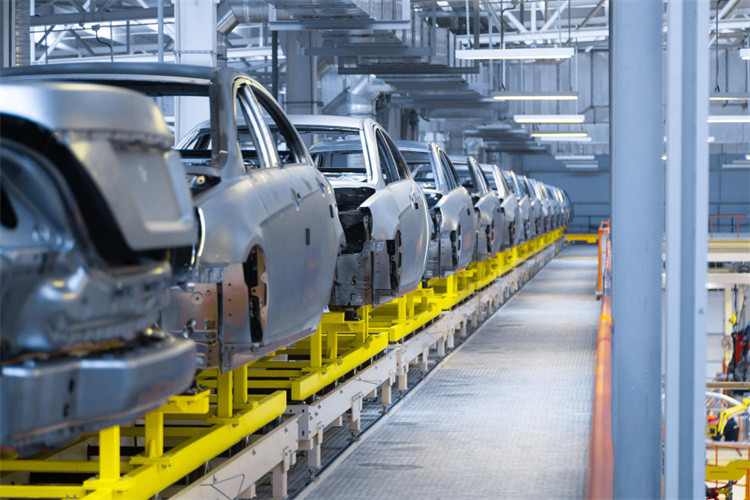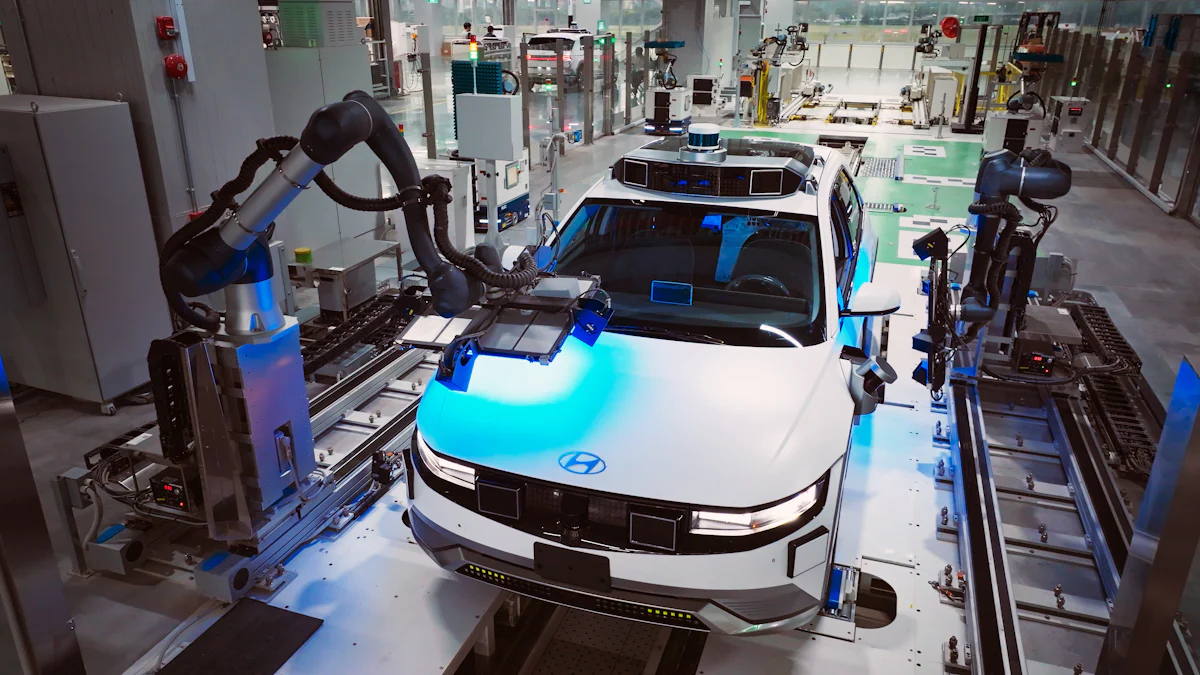Current State of the Automotive Supply Chain Industry in the United States

The automotive industry in America plays a crucial role in the national economy. The sector generates over $1 trillion annually through vehicle sales and services. The United States boasts one of the largest automotive markets globally, with 15.56million light vehicles sold in 2023. Automotive supply chains form the backbone of this industry. These supply chains ensure the seamless production and distribution of vehicles. Current challenges include disruptions and regulatory pressures. Trends like digitalization and sustainability are reshaping the landscape.
Overview of Automotive Supply Chains
The Automotive Supply Chain in America is a complex and multifaceted system. This system involves numerous components that work together to ensure the efficient production and distribution of vehicles. Understanding these components is crucial for grasping the intricacies of the industry.
Key Components of Automotive Supply Chains
Raw Material Sourcing
Raw material sourcing forms the foundation of the Automotive Supply Chain. Manufacturers acquire essential materials such as steel, aluminum, and plastics. These materials are necessary for producing various vehicle parts. Efficient sourcing strategies help reduce costs and improve production timelines. Global sourcing also plays a significant role. This approach allows manufacturers to capitalize on competitive pricing and quality materials.
Manufacturing Processes
Manufacturing processes in the Automotive Supply Chain involve several stages. These stages include assembling, painting, and testing vehicles. Advanced manufacturing techniques enhance efficiency and product quality. Automation and robotics have revolutionized these processes. These technologies increase production speed and accuracy. The integration of technology in manufacturing leads to cost reduction and waste minimization.
Distribution Networks
Distribution networks ensure that finished vehicles reach consumers promptly. These networks involve transportation, warehousing, and logistics management. Efficient distribution networks reduce delivery times and costs. Collaboration among various stakeholders enhances the effectiveness of these networks. Transparency and visibility in distribution processes improve customer satisfaction.
Role of Technology in Automotive Supply Chains
Technology plays a pivotal role in transforming the Automotive Supply Chain. Innovations in technology have led to significant improvements in supply chain operations.
Automation and Robotics
Automation and robotics have become integral to the Automotive Supply Chain. These technologies streamline manufacturing processes and improve precision. Robots handle repetitive tasks with high accuracy. Automation reduces human error and increases production efficiency. The adoption of robotics has led to cost savings and enhanced product quality.
Digitalization and Data Analytics
Digitalization and data analytics have revolutionized the Automotive Supply Chain. These technologies provide real-time insights into supply chain operations. Data analytics helps manufacturers make informed decisions. Improved visibility and transparency enhance collaboration among stakeholders. Digitalization enables better forecasting and demand planning.
Impact of AI and Machine Learning
AI and machine learning have a profound impact on the Automotive Supply Chain. These technologies predict customer demand accurately. AI-driven insights allow manufacturers to adjust supply plans effectively. Machine learning algorithms optimize inventory management. The integration of AI enhances overall supply chain resilience.
Current Challenges Facing Automotive Supply Chains

Supply Chain Disruptions
Impact of Global Events
Global events have significantly impacted the Automotive Supply Chain. Natural disasters, geopolitical tensions, and the pandemic have caused disruptions. These events have created a cascade of challenges for manufacturers. The automotive industry has faced delays in the delivery of essential parts. The pandemic led to a decrease in vehicle demand, affecting production rates. Manufacturers continue to navigate these disruptions with difficulty.
Shortages and Delays
Shortages and delays remain persistent issues in the Automotive Supply Chain. The industry has experienced a shortage of critical components like semiconductors. This shortage has slowed down vehicle production. Labor shortages have also contributed to delays. Inflation has increased costs, adding pressure to supply chains. Manufacturers are actively seeking new methods to secure critical parts. The shift to electric vehicles adds complexity with new suppliers and components.
Regulatory and Environmental Challenges
Emission Standards
Emission standards pose significant challenges for the Automotive Supply Chain. Stricter regulations require manufacturers to adapt quickly. Compliance with these standards demands innovation and investment. Manufacturers must develop cleaner technologies to meet requirements. The transition to electric vehicles aligns with emission goals. However, this transition requires substantial changes in supply chain operations.
Trade Policies
Trade policies influence the dynamics of the Automotive Supply Chain. Changes in trade agreements affect sourcing strategies. Tariffs and trade barriers impact the cost of materials. Manufacturers must navigate these complexities to maintain efficiency. The U.S.-Mexico trade relationship plays a crucial role in the automotive sector. The automotive industry accounted for a significant portion of trade between the two countries in 2022. Manufacturers must adapt to evolving trade policies to ensure supply chain stability.
Trends and Innovations in Automotive Supply Chains

The Automotive Supply Chain is undergoing significant changes due to emerging trends and innovations. These developments aim to enhance efficiency and sustainability.
Sustainable Practices
Sustainability has become a key focus in the Automotive Supply Chain. Manufacturers are adopting practices that minimize environmental impact.
Green Manufacturing
Green manufacturing involves using eco-friendly processes and materials. Manufacturers aim to reduce emissions and waste. Renewable energy sources power production facilities. This approach decreases reliance on fossil fuels. Recycled materials are used in vehicle components. This practice reduces the demand for raw materials.
Circular Economy
The circular economy emphasizes resource efficiency. Manufacturers design products for longevity and recyclability. End-of-life vehicles are disassembled for parts reuse. This process minimizes waste and conserves resources. The circular economy promotes sustainable growth in the Automotive Supply Chain.
Emerging Technologies
Emerging technologies are transforming the Automotive Supply Chain. These innovations improve transparency and efficiency.
Blockchain for Transparency
Blockchain technology enhances transparency in the Automotive Supply Chain. Each transaction is recorded on a secure digital ledger. This system ensures data accuracy and traceability. Stakeholders can access real-time information on product origins. Blockchain reduces fraud and increases trust among partners.
IoT in Supply Chain Management
The Internet of Things (IoT) optimizes supply chain management. Sensors collect data on vehicle components and logistics. Real-time monitoring improves inventory management. IoT devices track shipments and predict maintenance needs. This technology enhances decision-making in the Automotive Supply Chain.
Strategies for Improving Supply Chain Resilience
The Automotive Supply Chain faces numerous challenges that require strategic solutions to enhance resilience. Companies must adopt innovative strategies to ensure stability and efficiency in their operations.
Diversification of Suppliers
Diversifying suppliers is a critical strategy for building resilience in the Automotive Supply Chain. Companies can reduce dependency on a single source by engaging multiple suppliers. This approach mitigates risks associated with supply chain disruptions.
Local vs. Global Sourcing
Local sourcing offers several advantages over global sourcing. Companies like BMW, Honda, and VW have increasingly turned to local sourcing in markets such as India. Local sourcing reduces logistics costs and vulnerabilities linked to long supply chains. It also helps mitigate risks from cost fluctuations and supply chain issues. Global sourcing, however, allows companies to diversify their supply chains across regions. This diversification lowers risks from natural disasters, political instability, or economic downturns. A balanced approach between local and global sourcing can optimize supply chain resilience.
Investment in Technology
Investment in technology plays a vital role in strengthening the Automotive Supply Chain. Technological advancements provide tools for better management and risk mitigation.
Enhancing Supply Chain Visibility
Enhanced visibility in the Automotive Supply Chain allows companies to monitor operations closely. Real-time data collection and analysis improve decision-making processes. Advanced technologies such as IoT devices track shipments and inventory levels. This transparency enables proactive responses to potential disruptions.
Predictive Analytics for Risk Management
Predictive analytics offers valuable insights into potential risks within the Automotive Supply Chain. Data-driven models forecast demand fluctuations and identify vulnerabilities. Companies can adjust their strategies based on these predictions to minimize risks. Predictive analytics enhances overall supply chain resilience by enabling informed decision-making.
The blog has explored the intricate dynamics of automotive supply chains in America. Key components include raw material sourcing, manufacturing processes, and distribution networks. Technology plays a pivotal role in enhancing efficiency and resilience. The future outlook for automotive supply chains appears positive. New research and development initiatives are transforming the industry. Global sourcing remains essential for competitiveness. Elevated interest rates may impact sales, yet recovery trends are promising. Industry stakeholders must adopt strategic initiatives. These efforts will ensure financial performance improvements and sustainable growth.
See Also
Unlocking the Power of Your Automotive Supply Chain
Mastering Automotive Supply Chain Challenges: Expert Advice
Diving into Robotics Tech: Supply Chain Transformation
Artificial Intelligence in Supply Chain: Tomorrow's Logistics Evolution
Jusda Supply Chains and Global Consumer Needs: An In-Depth Analysis
